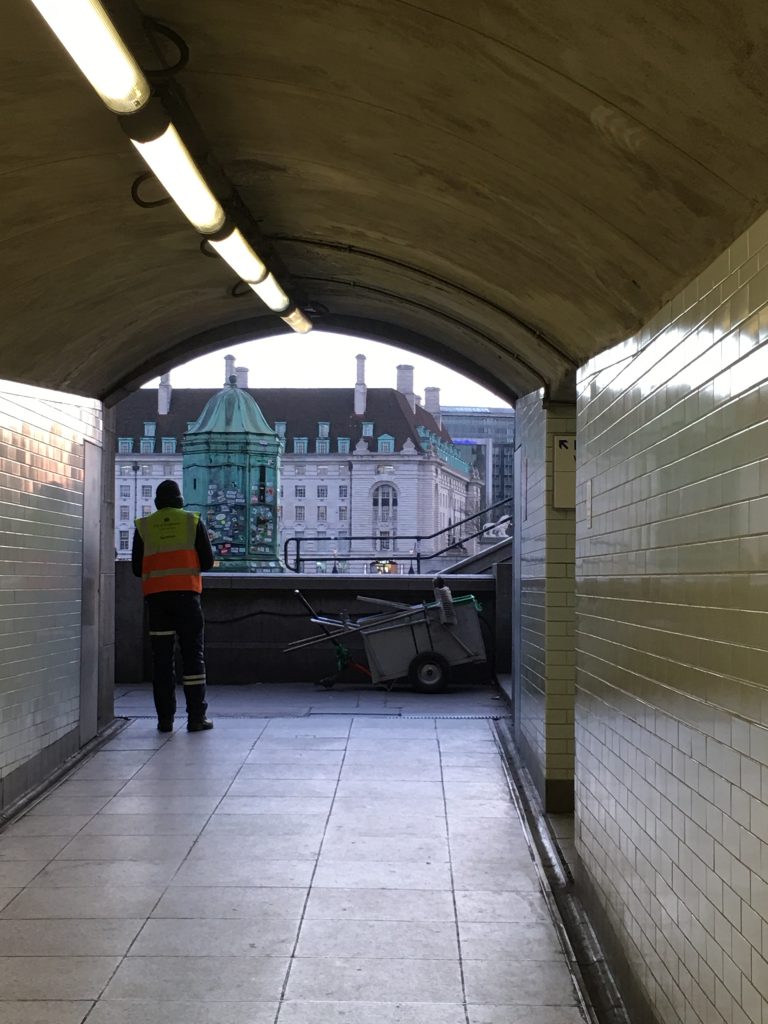
The train arrived on time at the Underground Terminal of Westminster Station. Most everyone departed making their way onto the platform, riding escalators and taking stairs to the busy world above. I had not yet reached the Thames River, but my heart was pounding in anticipation as I exited the tunnel and the view opened up providing me a glimpse of London’s South Bank.
With its spectacular museums, lavish gardens, notorious theaters and exuberant history, London’s cosmopolitan style and attitude attracts over 27 million visitors each year and is home to over 8 million.
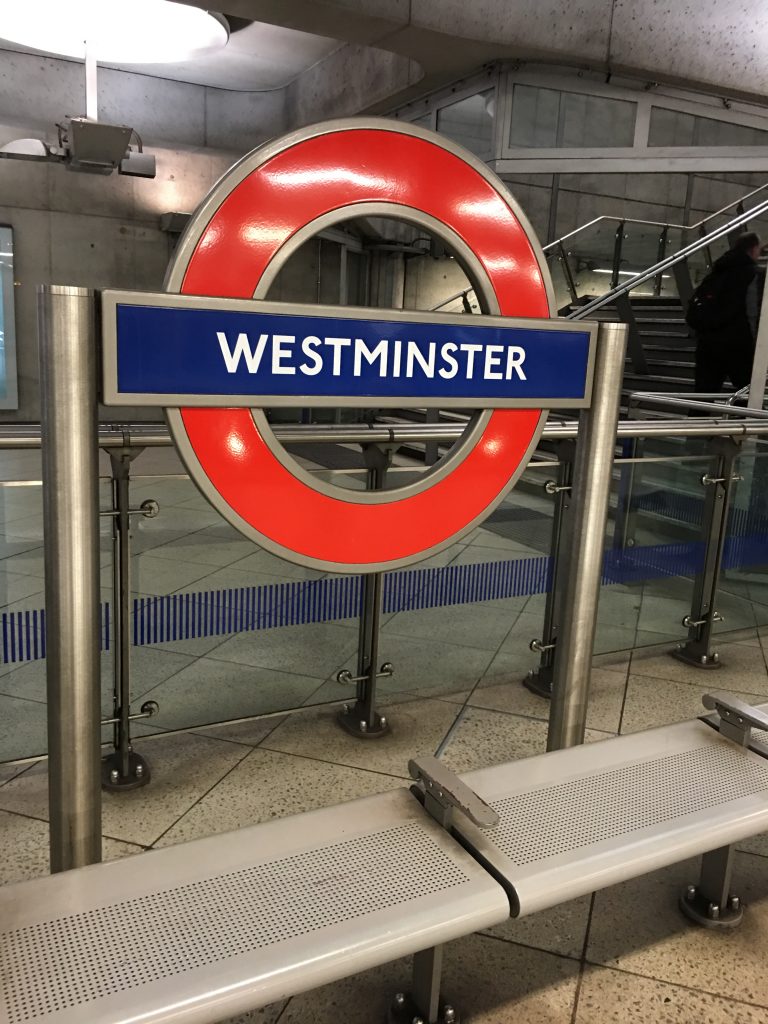
Under the suggestion of Rick Steves, I began my exploration of London at Westminster following the Westminster Walk from his Best European City Walks & Museums guide. Next, I will visit a couple of museums, take the bus tour around the city and if I have time, cruise down the river Thames. Earlier that morning, I walked to the Gloucester Road Station to purchase my pass. The front desk attendant suggested that I stop by The Shard for a spectacular view of the city, which I hoped to fit into my schedule later in the day.
I had plenty of British Pounds to purchase a full day pass which allowed me unlimited rides on the Tube for zones 1 & 2. I fed the machine and confirmed that I was heading westbound for the Westminster stop.
The “Underground” was not as busy as I had expected at 6:30 AM. The train approached, opened its sliding doors and reminded passengers to “Mind the Gap” before taking their seats. I found a spot next to a young mother with her little boy in a stroller, who was eating his morning breakfast. It was a busy work day with full compartment of business suits and backpacks. I counted the five stops before hopping off the train and was feeling a sense of excitement to explore London having just read the book, War of the Roses.
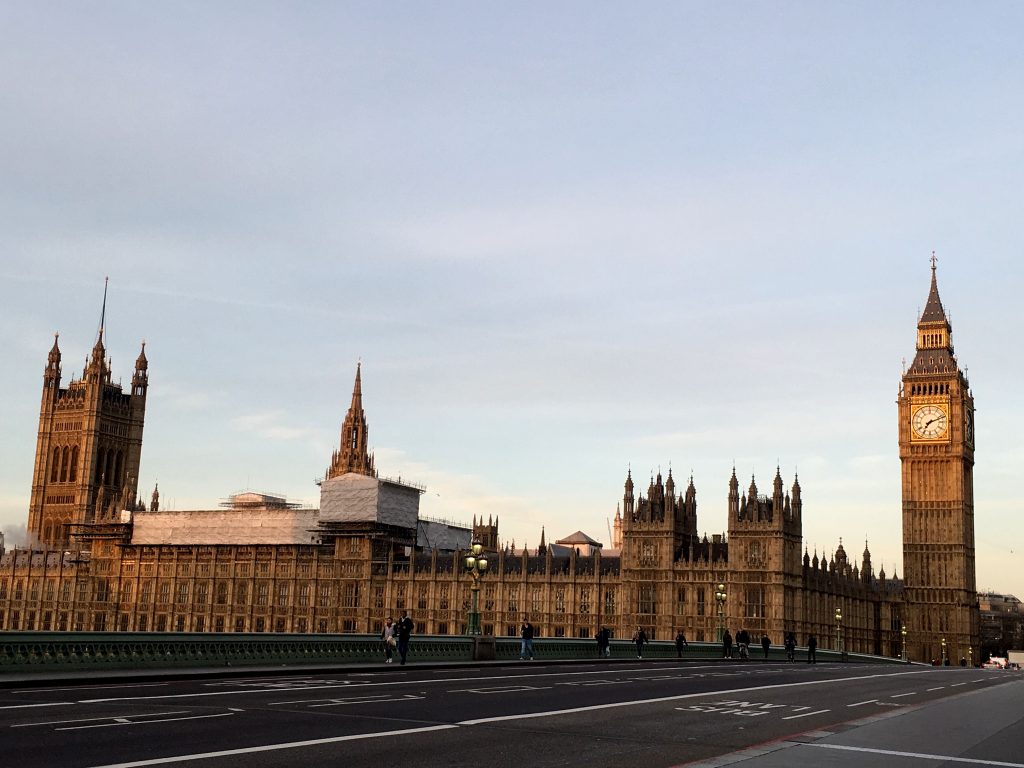
The exit led me up to a set of stairs where I found the statue of Boadicea to my right. She was queen of the Iceni tribe who led an uprising against the Roman Empire in the first century AD. An unobstructed view of the Parliament buildings as well as Elizabeth Tower stood to the north. Soaking in my surroundings from the Westminster Bridge, I admired the London Eye, the Thames River and the London Bridge in the distance.
Elizabeth Tower (lovingly named after the current Queen of England) stood shining in the morning sunlight and I waited in anticipation to hear Big Ben toll at the hour. The structure stands 320 feet high and is connected to the Parliament Buildings, the central meeting places for the British Government. For years, since the 11th century, when King Canute built a palace here, the Royal Family lived at Parliament until they relocated to Buckingham Palace.
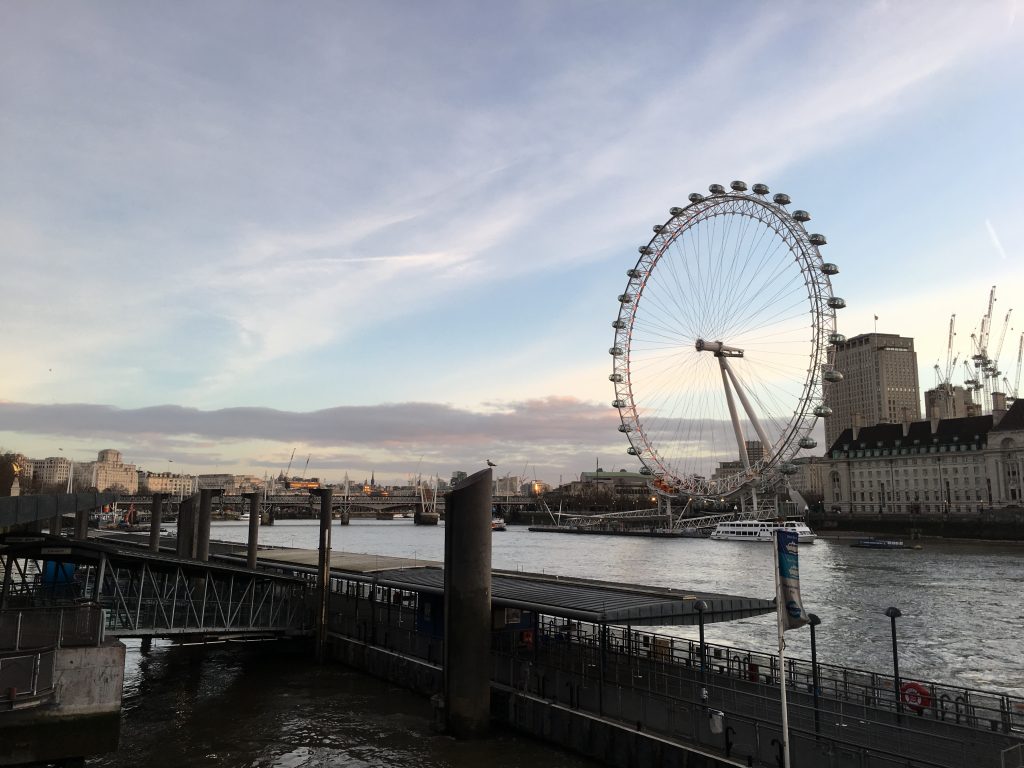
Along the banks of the Thames is the London Eye, built in 2000 and standing 443 feet tall. There are 32 capsules which hold 26 visitors in each car. On a clear day, the views from this attraction can reach as far as 26 miles. The ride from start to finish takes approximately thirty minutes.
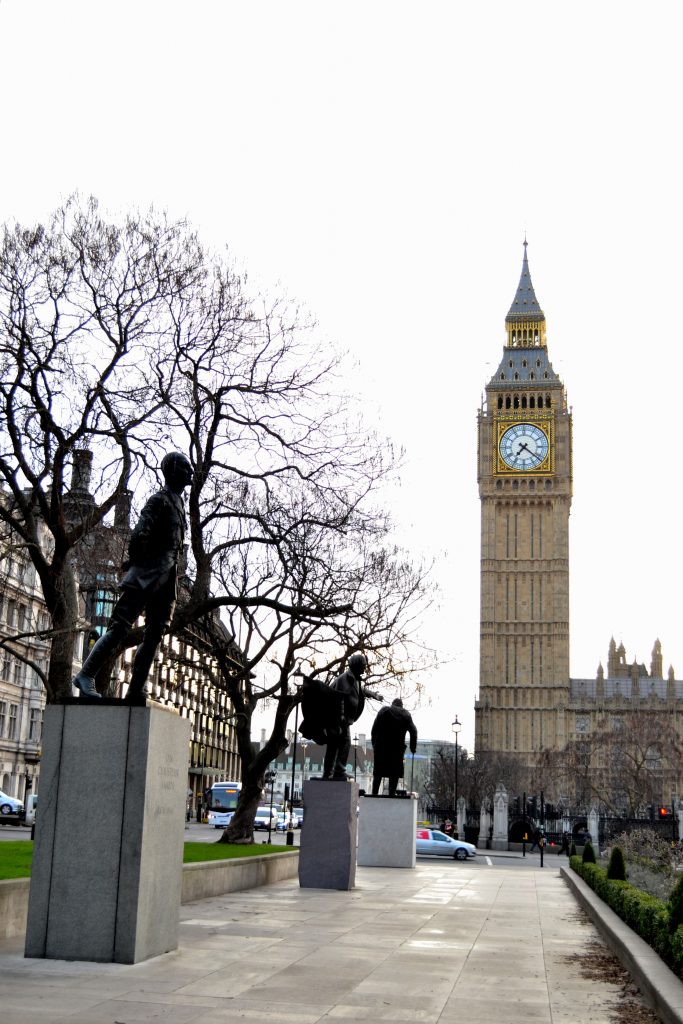
I felt a bitter cold wind off of the Thames gently pushing me towards Parliament Square, located across the street from Westminster Abbey. This quiet park, without a bird to be seen, was lined with statues of both famous Brits like Winston Churchill and David Lloyd George as well as notable world leaders, such as Abraham Lincoln, Mahatma Gandhi and Nelson Mandela. I followed the stone corridor of this lovely park where I found the gorgeous rosette stained glass window of the infamous Westminster Abbey ahead of me.
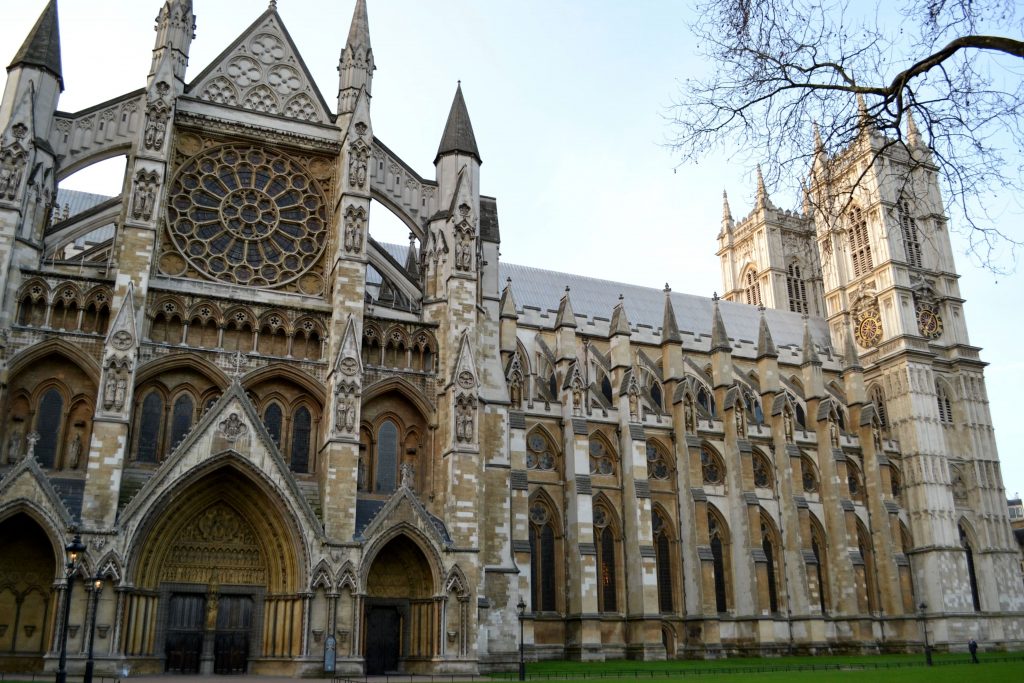
One of London’s most precious jewels, not only because of its spectacular architecture but its glorious history, is Westminster Abbey. Edward the Confessor founded the abbey and it is London’s oldest and most important church. For over ten centuries, the cathedral has been the location for a host of coronations, royal weddings and funerals. In 1997, Princess Diana’s funeral was held at Westminster Abbey where it was estimated over 3 million were in attendance for the funeral procession, while Will and Kate were married here on April 29th 2011.
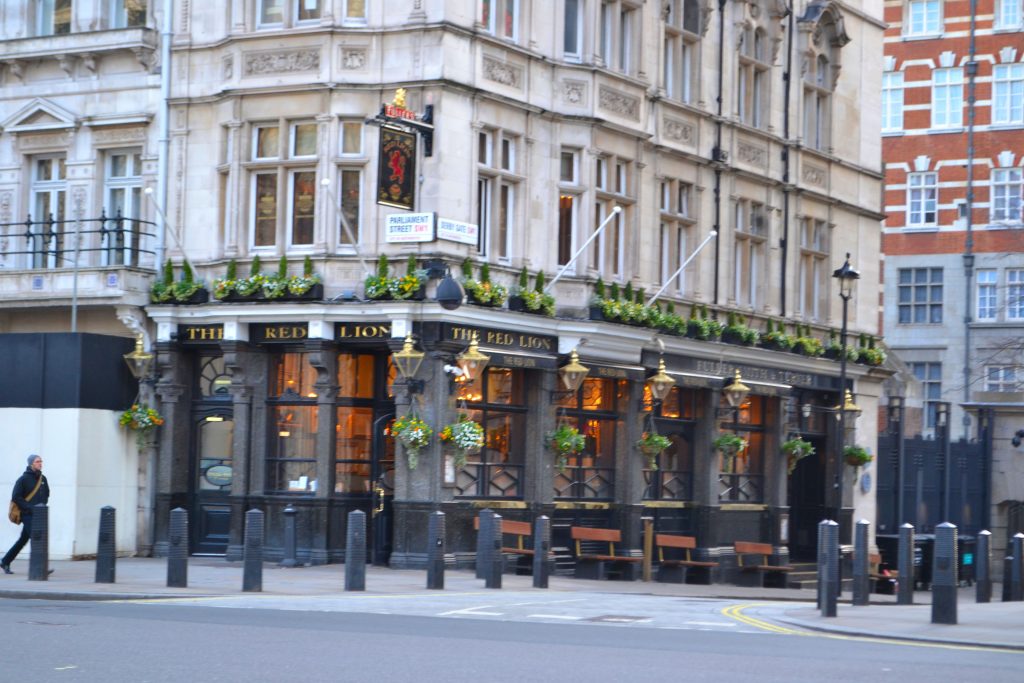
Following my map to find Whitehall Street, I realized I had come full circle when I noticed the Westminster public subway stop. My current route led me to many of London’s government buildings such as the Royal Navy Headquarters and the Ministry of Finance. Colorful pubs occupied corner spaces along the route and the crowds were starting to grow.
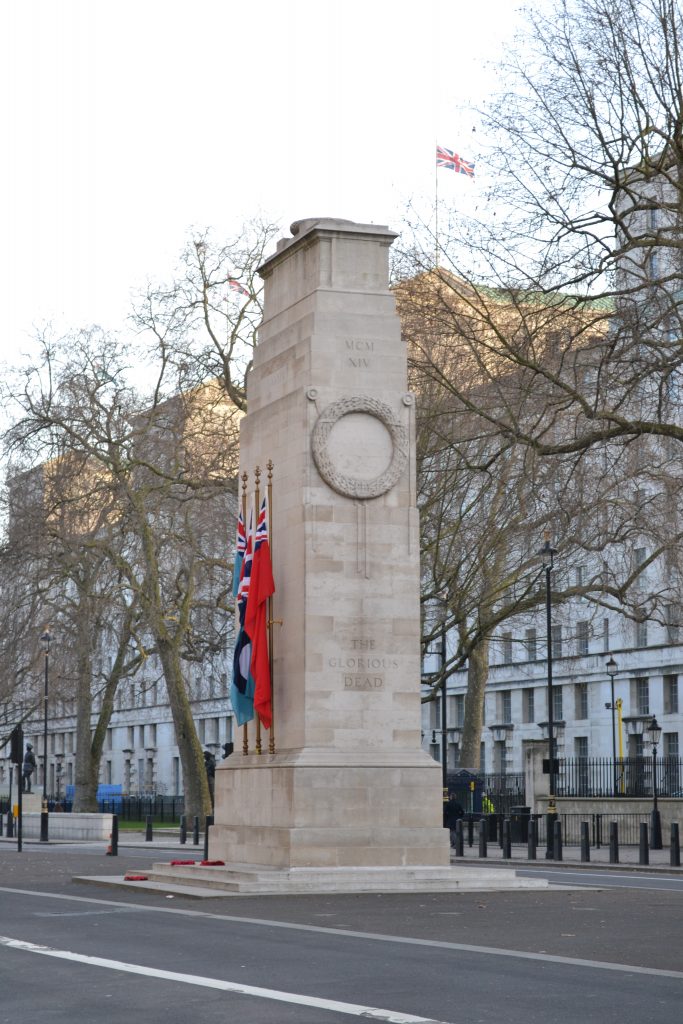
In the distance, I noticed a collection of three monuments, one positioned in the middle of Whitehall. On the towering white memorial made of marble, is a cenotaph honoring the brave men and women who died during the two Great Wars. Each year, in November, the Royal Family attends the Remembrance Day service which takes place around this “Glorious Dead” monument.
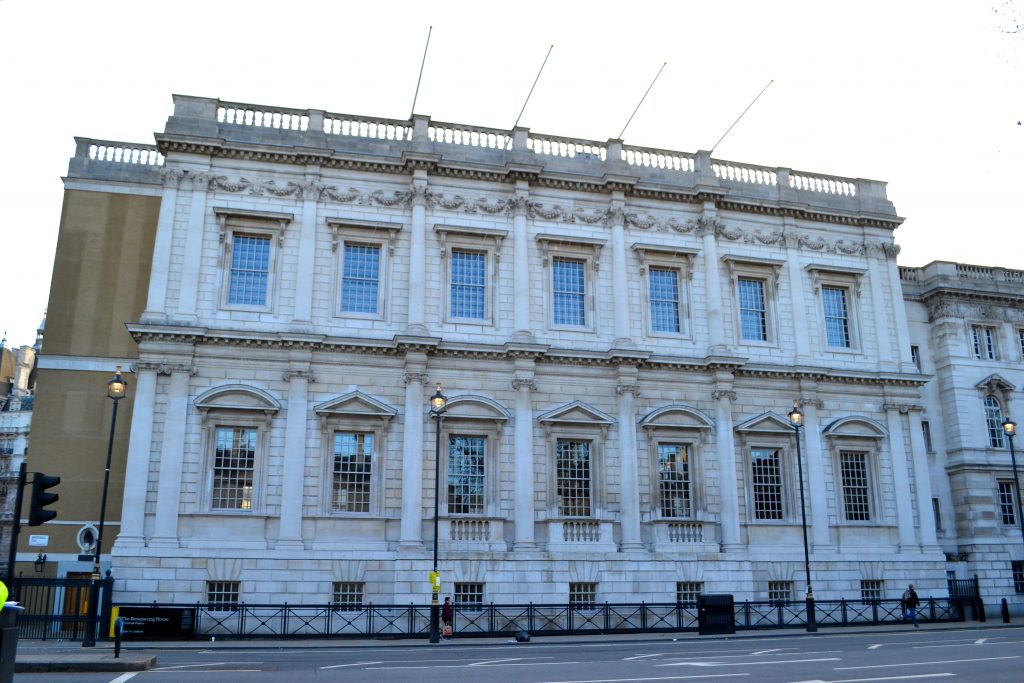
The large, white, Greek-style structure that occupies a block along Whitehall was once a part of the palatial estate of Henry VIII and the location of King Charles’ execution. Henry VIII moved out of his Palace of Westminster residence (Parliament) and built this grandiose building which, at one time, extended from Trafalgar Square to Elizabeth’s Tower. The 1698 fire destroyed most of Henry’s opulent structure, but what remained is the Banqueting House of Whitehall Palace.
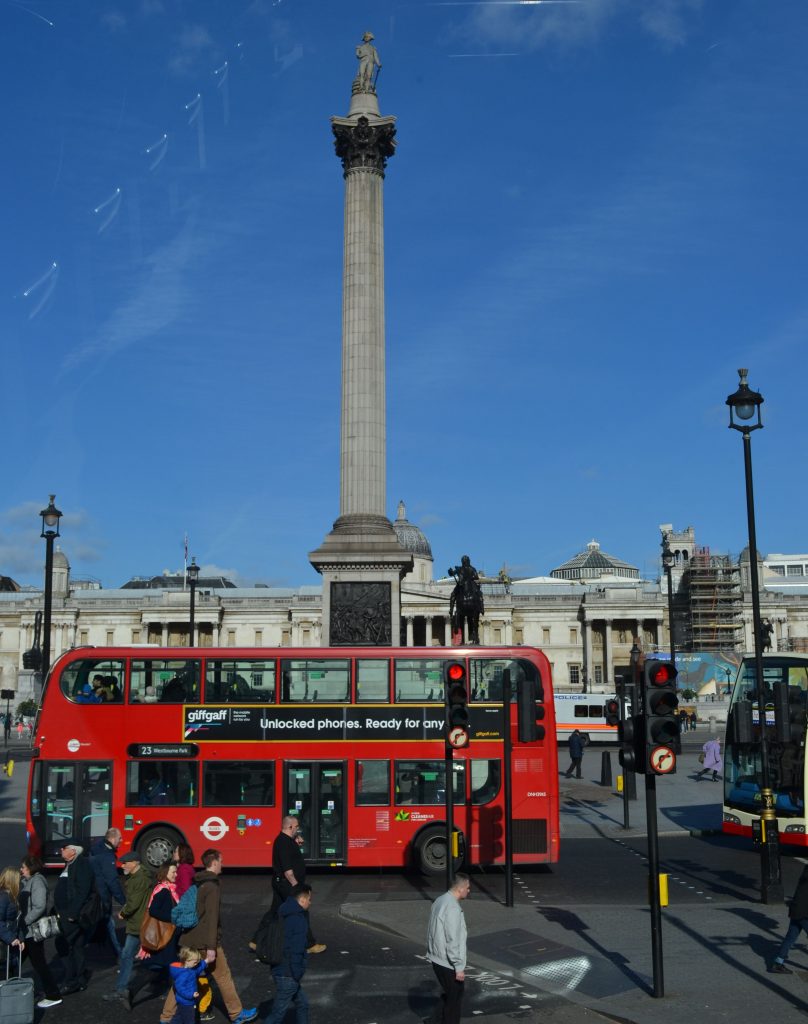
Continuing my walk towards Trafalgar Square, I noticed that the Horse Guard station was empty, and within minutes I stood in front of the 170 foot column supporting the statue of Admiral Horatio Nelson. Credited for his leadership during World War II and the defeat at Waterloo, he died a heroic death in battle.
The square was alive with tourists and commuters passing through to reach their destination. A line formed at the entrance of the National Museum which had not yet opened. Attempting to climb one of the four bronze lions, a group of teenagers disregarded the warning signs and placards, capturing photos with their cellular devices. A light mist of spray clings to my coat and kisses my face as I pass a fountain eager to find the ticket office for the Hop On/Hop Off bus. A perfect mode of transportation for the day, the double-decker is a quick option for touring of London. Bringing me back to Trafalgar Square, I will have time to indulge in more attractions, sites and pubs which are waiting to be explored.
Have you had the opportunity to visit London? Which guidebooks and resources did you reference? Let me know about your visit by providing a message in the comments section below. Many thanks for reading about my walking tour of Westminster in London and wishing you many Happy Travels!
Where to Stay:
The Ambassadors Hotel
16 Collingham Road
Kensington, SW5 0LX
London, United Kingdom
Telephone: +44 20 7373 1075
Photo Credit: Ambassadors Hotel London
Where to Eat:
Earl’s Court Tavern
Taylor Walker
187 Earl’s Court Road
London, SW5 9RL
United Kingdom
Telephone: +44 20 7370 2760
Walking Tour Resources:
Best European City Walks & Museums guide, by Rick Steves
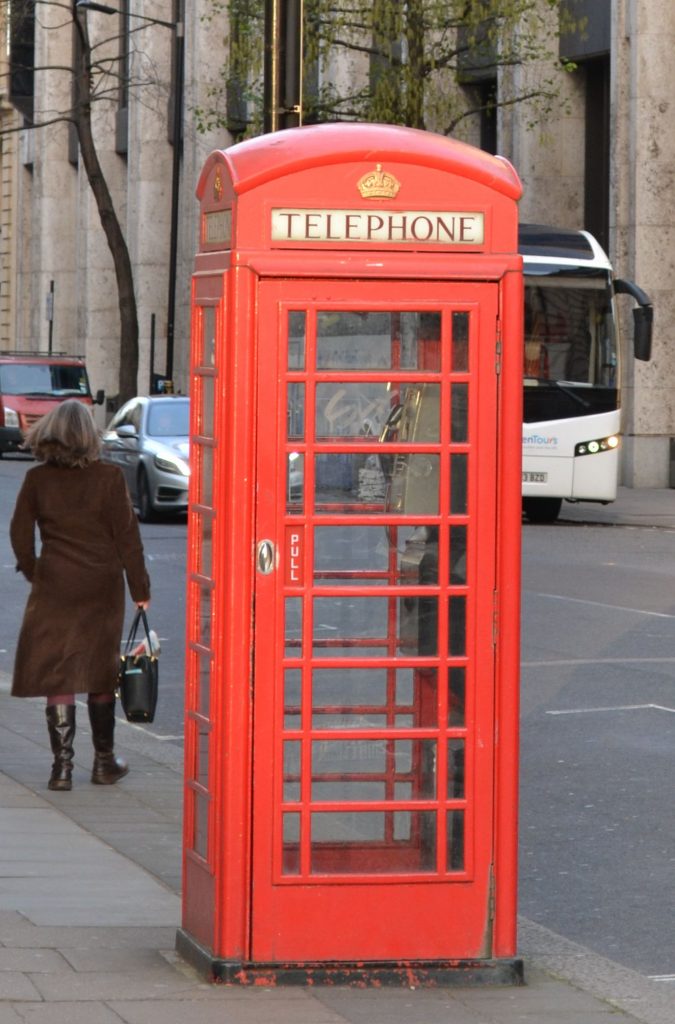
London Telephone Booth